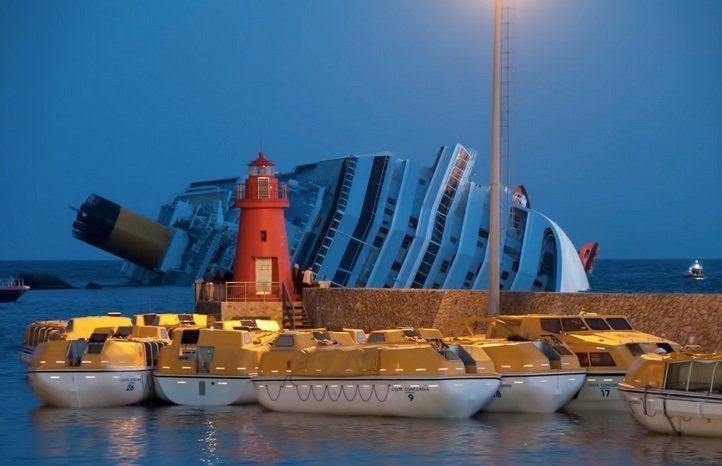Poisoned profits: How toxic leaders kill excellence

Bob Couttie from Maritime Accident Casebook warns shipping’s hierarchical nature can lead to severe HR issues.
Toxic leaders are the green wallpaper in any organisation. Back in the 19th century Scheele’s Green was a popular colour for products ranging from wallpaper to clothing , children’s toys, and candles. The chemical name for Scheele’s green is copper arsenite – yes, it is a compound of arsenic.
In the Victorian era it was everywhere, slowly and surely poisoning those exposed to it. There was an epidemic of women fainting whilst wearing green dresses, children died licking wallpaper and were made ill by the fumes emitted by green candles. It is even believed to have contributed the death of Napoleon Bonaparte on the island of Elba whose wallpaper may have given him his acute gastric problems and cancer. Links have also been touted to the madness of George III and Van Gogh, Cezanne’s deadly diabetes and Monet’s blindness.
No matter how big, influential or wealthy you were, arsenic would sicken and kill. After a visiting dignitary fell ill at Buckingham Palace Queen Victoria had all the green wallpaper removed from the rooms.
In the same way, a toxic leader, perhaps a department or divisional manager or a company executive in a senior management position can poison a company, reduce workforce morale, heighten staff turnover and inhibit the brightest and best from reaching the level of excellence that helps your company reach its goals and objectives.
There are people in every company with bright ideas but if they are stifled by a toxic manager then your company will not benefit from them, but they might move to another company that will listen and will benefit.
Slowly and surely they poison your corporate culture.
Yet the Victorians knew that arsenic was poisonous. It was used to eliminate mice and rats. Arsenic was often called ‘the inheritance powder’, used in fiction and in reality, yet the dangers were often simply denied. It was not as if nobody knew.
As I’ve reviewed and analysed maritime accident reports over the past two decades I am struck by how often the master of the vessel, the equivalent of a corporate divisional manager, has displayed symptoms of toxic leadership that have raised concerns among senior managers who did not address the issue.
Toxic leaders have a cost. The tragedy of the Costa Concordia cost 32 lives, damaged the company’s reputation and cost it many millions of dollars. The sinking of the Titanic, another case of toxic leadership, almost sent White Star Line into bankruptcy – and the Titanic was not actually insured on her maiden and final voyage.
The maritime industry is very hierarchical, much like the military, which has explored the issue over the decades. It is nothing new – had George Armstrong Custer not been a charismatic, toxic leader then Crazy Horse may not have walked away from the Battle of the Little Bighorn with a smile on his face.
A third, almost ultra-hierarchical management situation is behind the doors of your favourite restaurant, another industry with more than its share of toxic leaders. It is almost a tradition among chefs.
National cultures also play a role. The more hierarchical the culture, the greater the power distance, the more likely that toxic leaders flourish. This is particularly so in patriarchal societies. In one maritime accident a junior officer overrode the master of the vessel because the junior officer had graduated earlier from maritime college. In another case a vessel with Greek officers and a Southeast Asian crew was lost with the all but six seafarers out of 30. In that incident, the toxic leaders could not deal coherently with the crisis and could not function. A common element among toxic leaders is that they fall apart in a crisis. Every company faces crises at some point, when clear thinking is needed. Toxic leaders panic, lose the plot, when a situation takes them outside their comfort zone.
The more hierarchical your company is, and all companies inevitably have a degree of hierarchy, the more likely it is that toxic managers are poisoning the well, unrecognised but sapping the company of the resources and enthusiasm needed in today’s fast-moving environment. They damage your most important resource – your people.
Your people make your profits, they create your company’s reputation and they are your tools to achieve excellence. The toxic manager blunts your most important asset.

What a great article, informative, educational and interesting.
Excellent article.
Yes, we are an industry with a bad habit of – almost an addiction to – turning blind eyes to toxic leadership. Superintendents are encouraged to act like all too many chefs do, and behave like bullies / “his methods may be a bit rough but he gets the job done and his ships operate on budget” – at what cost? The cost is hidden, crew members just walk away, until the ship is found to be in a real mess or a crew member can’t take it any more and turns violent.
Meanwhile many, many applications of IT have the effect of reinforcing toxic leadership. Think of the Uber boss’s rant in a taxi – a classic toxic leader – and then think of how you planned maintenance and stores IT gets used in practice…
We need to look hard at this
Great comment!
I should point out that toxic leaders do not occur solely on the bridge, or the engine room, but at head office too. I hope some folk will share their toxic leader horror stories, either here or privately.
Nicely written Bob